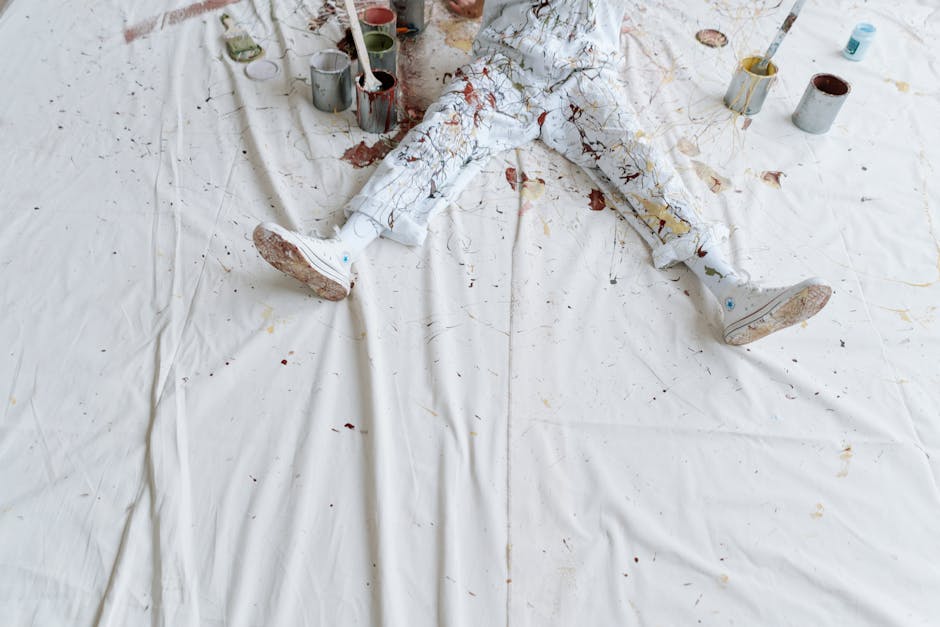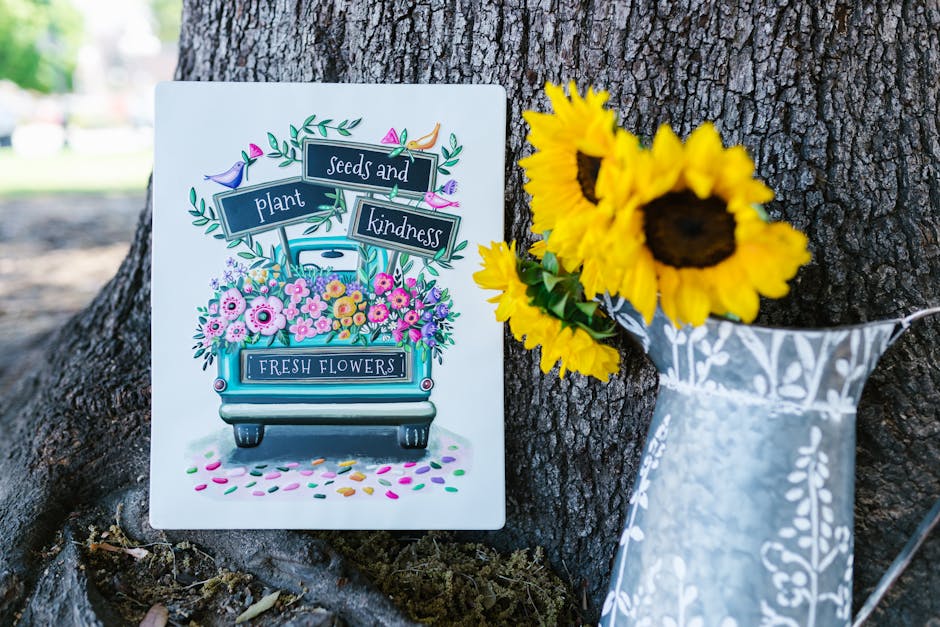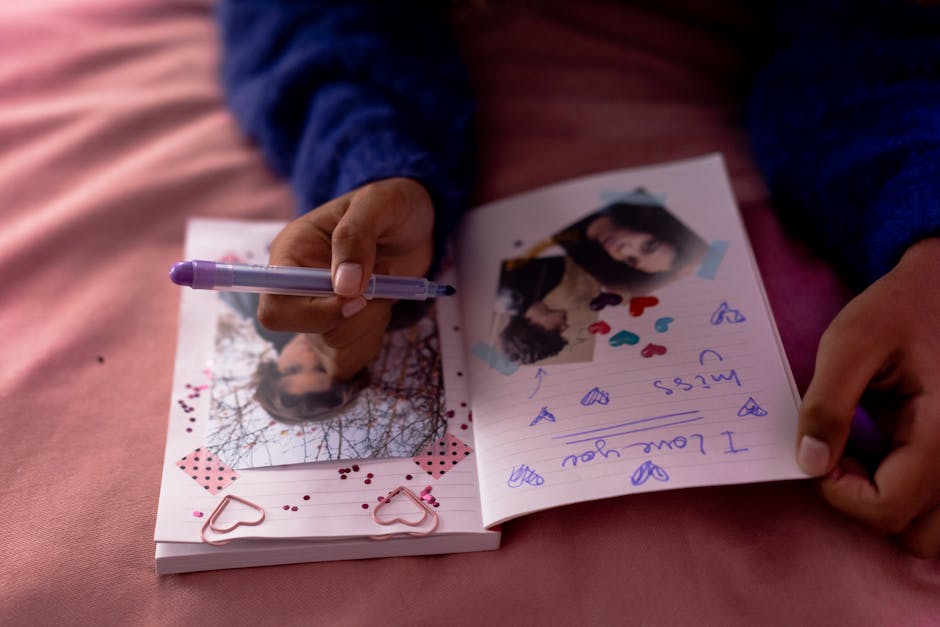Art is no longer confined to canvas, clay, or film. Today’s creators are picking up materials that used to live on the edges of utility—recycled plastics, raw earth, code, food waste—and treating them as legitimate tools for expression. The question is no longer what’s available, but what message each material can carry.
This shift away from traditional mediums isn’t just about novelty. It’s a direct response to climate anxiety, digital saturation, and broader cultural shifts. Artists aren’t waiting for permission to redefine their form. They’re using what’s around them—literally—to challenge what art is and who gets to make it.
Material experimentation is often where real innovation happens. A filmmaker edits footage using AI-generated visuals from vintage ads. A sculptor replaces marble with compressed landfill. These aren’t gimmicks—they’re works that force viewers to think about impact, value, and process. The result: art that sticks, challenges, and refuses to be ignored.
Turning trash into treasure isn’t just a metaphor anymore. Creators across mediums are reclaiming the discarded and overlooked: broken appliances, outdated tech, fallen branches, cracked concrete, rusted bike parts. If it’s been left behind, it’s fair game.
This mindset isn’t new. Marcel Duchamp dragged a urinal into an art gallery and called it a fountain. That was over a hundred years ago. Since then, repurposing has evolved from commentary to craft. Now, YouTubers are rebuilding laptops from spare circuit boards, urban explorers are turning graffiti-tagged warehouses into cinematic backdrops, and nature vloggers are capturing moments with gear made from recycled plastics.
The trick is seeing potential where most people look away. Organize walks with fresh eyes. Find patterns in piles. Ask: what’s this object’s story—and what could it become? Anything can be content, context, or both.
In a world drowning in stuff, those who tell stories around the scraps are standing out.
Beyond the Canvas: Generative Art on Unconventional Surfaces
Generative art is pushing physical boundaries in 2024. No longer limited to screens or traditional print media, artists are now turning to unexpected surfaces to bring their digital creations to life.
Printing on Non-Traditional Materials
As digital art becomes more accessible and versatile, creators are experimenting with surfaces such as:
- Textiles and wearable fabrics
- Acrylic, wood, and metal panels
- 3D-printed objects with embedded visuals
- Ceramic tiles and glass installations
These tactile formats expand the sensory experience of generative art, allowing audiences to engage with algorithm-driven designs in a physical space.
Digital Data as Design: From GPS to Error Codes
Generative art is also making use of highly specific data sets to create meaningful visuals. Artists are translating:
- Heat maps into dynamic patterns for fabrics and installations
- GPS routes into abstract line work and topographic visuals
- Error codes into glitch-inspired aesthetics that challenge the notion of perfection
This approach blends functionality with design, transforming digital information into unique expressions of personal or collective memory.
Where Tech Meets Tactile
The collision of data and material is leading to a new kind of aesthetic—one where the sleek logic of code meets the imperfections of texture, reflection, and human craftsmanship. As generative art expands into the physical world, it invites viewers to question the boundaries between the digital and the tangible.
- Expect interactive pieces that respond to touch or proximity
- Look for more collaborations between digital artists and traditional craftspeople
- Watch as formerly niche formats—like CNC-milled artworks or laser-etched generative patterns—become more mainstream
Organic materials are making waves in mixed-media art, and for good reason. Soil, leaves, bones, fungi, and even food items aren’t just props; they’re part of the message. These raw elements bring chaos, depth, and physicality that can’t be faked with digital textures or mass-produced materials.
Working with nature means embracing imperfection. Leaves crumble, bones stain, fungi spread in ways you can’t fully control. That unpredictability adds real presence to a piece. Art made with living or once-living materials has weight. It feels more alive because it refuses to be sterile or neat.
But it’s not all romantic decay. Artists need to think about practical stuff. Safety matters. Some fungi release spores that aren’t exactly lung-friendly. Bones or meat-based materials can rot fast if not treated correctly. You’ve got to know how to clean, seal, and preserve your media if you want your work to last longer than a gallery weekend.
Then there’s the sustainability angle. If you’re pulling from nature, pull responsibly. Use fallen leaves, forage legally, and source materials in ways that don’t wreck the ecosystems you’re drawing from. Nature is generous, but respect keeps it that way.
Unconventional Materials in Fiber Art
Sculptural Weaving Reimagined
Fiber artists are pushing the boundaries of material and form, using unorthodox elements like plastic bags, electrical cables, and even human hair to create sculptural pieces. These materials challenge traditional expectations of softness, functionality, and domesticity in textile work.
- Plastic bags provide texture and commentary on waste and sustainability
- Cables introduce rigidity and industrial tension to woven forms
- Human hair brings raw intimacy and autobiographical expression
By incorporating materials that fall outside the typical textile toolbox, artists are rethinking fiber as a medium rooted not only in touch but in narrative and context.
Fiber Art as Soft Sculpture
The line between textile and sculpture is becoming increasingly blurred. Artists treat fiber like a structural medium, shaping elaborate three-dimensional forms. These works are not only visually intricate but spatially commanding, engaging with space in ways reminiscent of installation art.
- Techniques like coiling, knotting, and twining offer structural stability
- Works explore volume, shadow, and movement despite soft origins
- Many pieces are designed to evolve over time, embracing decay or transformation
Layers of Culture and Emotion
Material choice plays a crucial role in adding cultural and emotional depth to fiber art. Reclaimed objects, synthetic textures, and biologically intimate components all carry narratives.
- Using culturally specific materials fosters identity-based storytelling
- Found objects can challenge consumerist habits or honor domestic labor
- Emotional layering emerges through the histories embedded in tactile surfaces
Fiber art in this form moves beyond craft. It becomes a multi-sensory language for exploring identity, memory, and contemporary social commentary.
Vloggers are getting their hands dirty—literally. Scrap metal, old wiring, silicone remnants, even leftover construction debris are getting a second life on camera. What used to be junk is now raw material for creativity and storytelling.
Blending the jagged and the tender is the new art. Creators are pairing unforgiving elements with soft concepts like emotional healing, sustainability, or quiet routines. Building a video around turning rusted pipes into modern shelving? That’s content gold. This contrast grabs attention and invites viewers into a transformation that’s both physical and thematic.
Across cities, workshops and creative spaces are opening up to support this kind of vlogging. These aren’t just maker hubs—they’re community engines where creators swap tips on everything from fireproofing insulation panels to shooting macro footage of soldering work.
It’s rough, it’s real, and it’s carving out a loyal corner of the vlogging world.
Blood, Ash, Coffee, Rust: Unconventional Pigments and Mediums
Vloggers in 2024 aren’t just picking up a camera—they’re turning their whole lifestyle into raw material. We’re seeing a surge in creators who lean into the strange and tactile. DIY pigments made from blood, ash, coffee grounds, rust—things with weight, history, friction. It’s less shock value, more statement. Each medium tells its own story.
They’re not stopping with pigments. Paintings are going up on surfaces that reject comfort: shattered glass, sandpaper, sheets of raw aluminum. Gritty textures that fight against the brush but pull the message forward. The medium forces the process to slow down, break apart, and get intentional. This isn’t polished content. It’s intentional chaos.
The question that always follows this kind of work is: why? Here’s the deal—audiences want meaning over perfection. The weirdness has a purpose. Using rust instead of rouge gets people to pause. Painting on something that cuts or crumbles keeps it honest. In a world ruled by algorithms and filters, this kind of content sticks. It’s risky, imperfect, and very, very real.
Artists in the vlogging space are turning inward, letting memory, instinct, and scraps of subconscious guide their creative choices. The materials vloggers reach for — whether it’s B-roll, background texture, or a tightly cropped frame drenched in color — are increasingly tied to how something felt, not just how it looks. A scene picked because it reminds you of childhood, a soundtrack that echoes a random dream, or a jump cut that mirrors the beat of anxiety — these cues hit harder than polished, predictable content.
The result? Emotion shows up in the details. Grainy handheld clips say raw. Overexposed sky at dusk says longing. Viewers might not catch it consciously, but they feel it. And that’s what sticks. Today, the smartest creators are learning that storytelling doesn’t just live in narrative — it lives in texture, shadow, rhythm. Start trusting the non-linear stuff. It’s often more real than the script.
For more inspiration on tapping into your subconscious during the creative process, check out Using Dreams and the Subconscious in Your Artistic Process.
Working With Unusual Materials: Safety, Storage, and When to Break the Rules
Some of the most compelling vlogs today feature creators using weird, wonderful, and sometimes downright risky materials—think thermochromic powders, reclaimed tech parts, or raw organic waste. But sourcing this stuff isn’t just about having a cool idea. You need to find suppliers who are legitimate, affordable, and understand both the shipping and safety implications. Sketchy eBay listings won’t cut it anymore.
Once you’ve got the materials, the next hurdle is keeping them stable. Some elements break down fast or react badly to heat, light, or moisture. That means you’ll need to invest in storage—airtight bins, light-blocking containers, or even refrigeration in some cases. Documentation helps too, not just for your own workflow, but in case platforms ask about hazards or partnerships.
As for rule-bending? Pushing boundaries gets attention, but not all risks are worth taking. Burning plastic indoors, cutting corners on disposal, or hiding sponsored materials can backfire hard. It’s all about the line: creativity thrives on tension and surprise, but trust is built on clarity and safety. Know when to color outside the lines—and when the fumes just aren’t worth it.
Innovation gets tossed around a lot, but let’s be clear—being different for the sake of it won’t get you far. Audiences are sharp. They’ll notice when your video feels weird without purpose. Cutting to static for five seconds or ranting into a fish-eye lens might seem edgy, but if there’s no clear point behind those choices, it falls flat.
Strong creative concepts are what give unconventional ideas their power. Vloggers pushing visual or narrative boundaries tend to stick when their content still carries a voice, a message, or a mission. Viewers will follow you to some pretty strange places, as long as you’re leading them with intent.
So yes, get weird. Break the format. Just make sure it serves the story. The best creators in 2024 aren’t loud for no reason. They’re bold with direction. Their art still speaks, even when everything else about the video screams not to look away.




